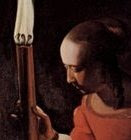Un peu d'aide que j'ai préparé pour les autres étudiants dans le cours Fr452 (Battle of the Muses: Sister arts and sibling rivalries in 17th Century France):
What to do about all those befuddling words you've never seen before in your life.
-Ask a native. (A bookish one).
-Dictionnaires d'autrefois aka University of Chicago's "the ARTFL project" - http://www.lib.uchicago.edu/efts/ARTFL/projects/dicos/
Dictionaries from the 17th, 18th, 19th, 20th centuries.
-Le petit robert and other French-to-French dictionaries. - http://www.lerobert.com/
-WordReference.com -Use sparingly. Half of it is wrong because they don't know what they're talking about.
-Google.fr it to check context in other usages of the word or phrase. - Be sure to look only on French original sites. (.fr, etc.)
10 Steps to Translation.
1. Read through your entire source text first.
2. Define your Specifications.
3. Set deadlines.
4. Translate. Tackle problem areas. Translate again. Do the best you can the first time around.
5. Sit on it./Give it to someone else.
6. Check to make sure everything got translated and you didn't screw anything up too badly. (Bilingual French-English check).
7. Sit on it./Give it to someone else.
8. Read through your English translation to make sure it reads well, sounds natural, your grammar is English and not French, etc.. (Monolingual check).
9. Check to make sure your formatting is correct. These things do happen.
10. Send it off.
What are Translation "Specifications"?
See Professor Melby's brochure. He explains it better. - http://www.atanet.org/docs/translation_buying_guide.pdf
Puzzling out Princess Elizabeth Tudor’s Life as a Teen
-
There are a number of puzzling facts about teen Elizabeth Tudor’s
relationship with her charismatic stepfather Sir Thomas Seymour. In his
second year as ...
Il y a 2 ans






Aucun commentaire:
Enregistrer un commentaire